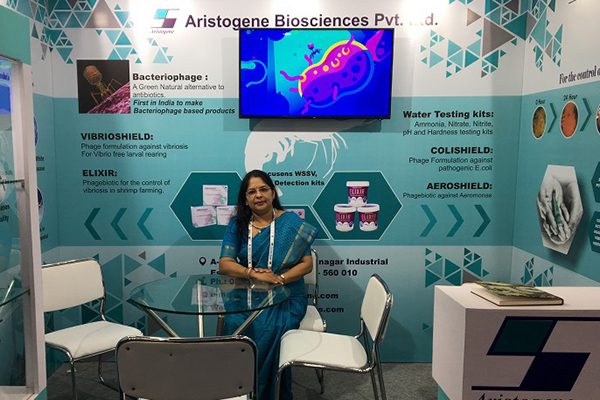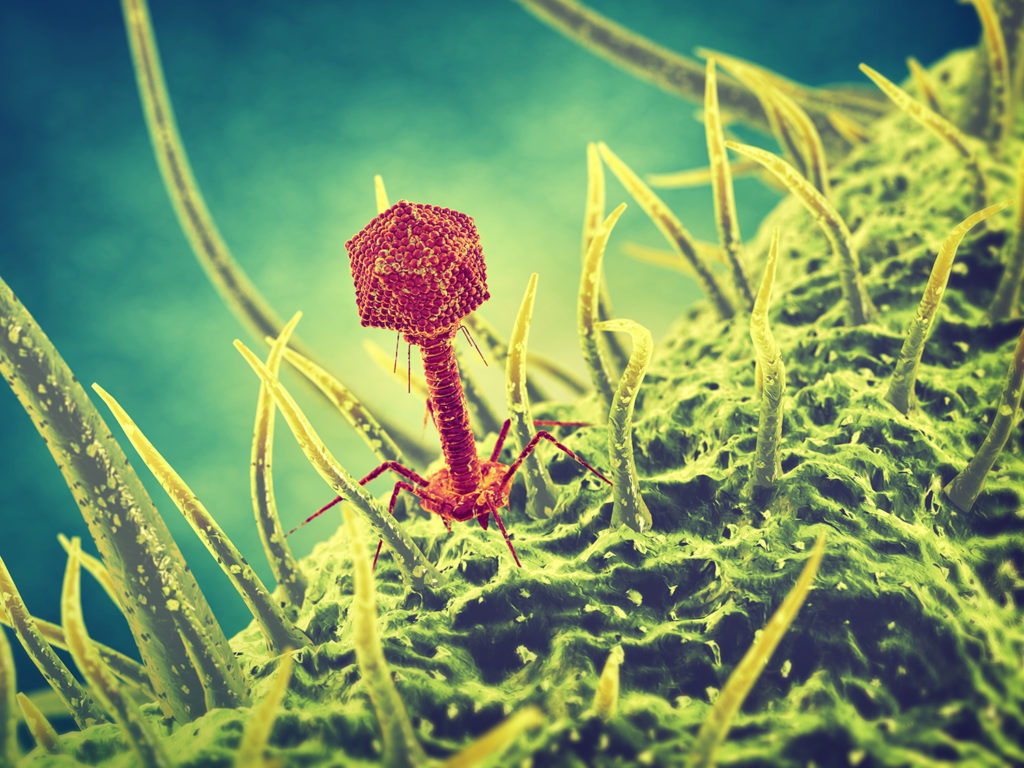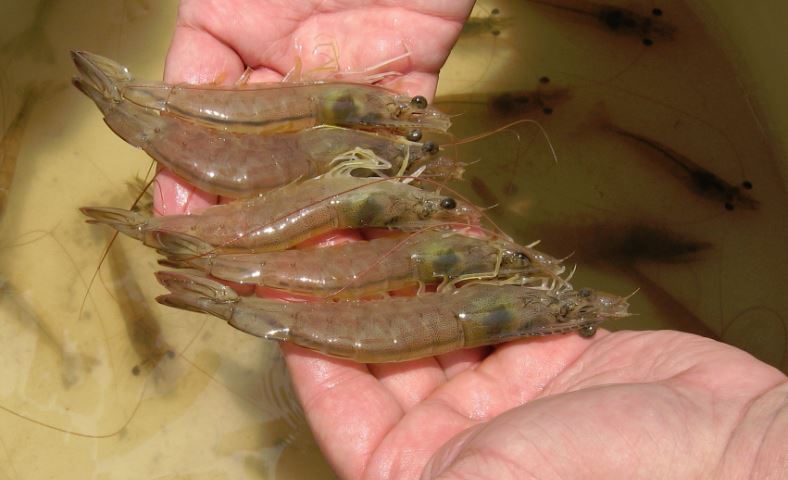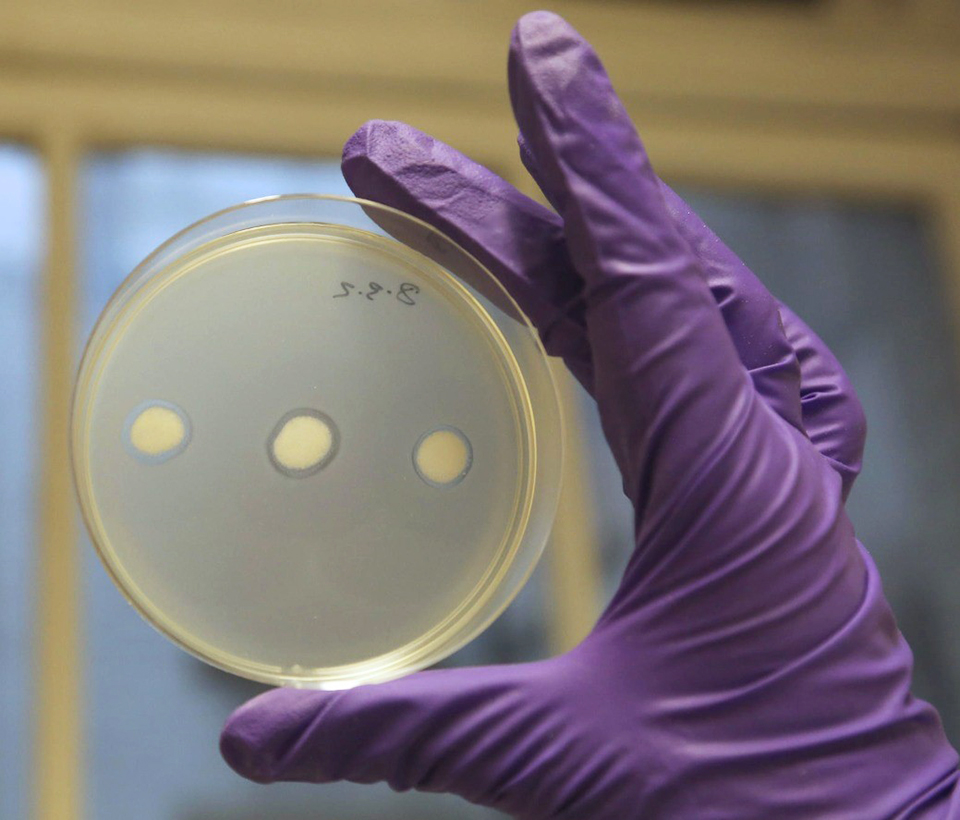Global Aquaculture Innovation Award finalist: Aristogene Biosciences

A severe outbreak of White Spot Disease in shrimp during the 1990s was the deciding factor behind Dr. Charavarthi Rangamani Subhashini’s decision to tackle one of the most significant threats to successful shrimp farming: viral and bacterial diseases. And now, Subhashini’s ground-breaking work deploying bacteriophages to fight Vibriosis could have enormous benefit for the aquaculture industry.
A veterinarian specializing in biotechnology, Subhashini worked with a biotechnology firm for 10 years before establishing Aristogene Biosciences, a research and manufacturing organization, in 2006. After winning a BIRAC Innovator Award from the Indian government for her improved version of molecular diagnostics, she put her knowledge and experience of bacteriophages to use in aquaculture, where bacterial diseases were becoming an increasing concern.
“We learned from shrimp farmers just how big an issue they were, and how antibiotics were being used to tackle them,” Subhashini told the Advocate. “We were already specializing in bacteriophage therapy for diseases in other species such as cattle and poultry, and decided to work with aquaculture, where efforts were needed to find alternatives to antibiotics.”
Now, Subhashini has pioneered such an alternative – two formulations called Elixir and Vibrioshield. These products have been selected as one of three finalists for the Global Seafood Alliance’s annual Global Aquaculture Innovation Award, sponsored by the U.S. Soybean Export Council. The winner will be determined at the organization’s GOAL conference next month. Made from bacteriophages that hunt and kill bacteria by multiplying inside the host organism, their target is Vibriosis, a disease caused by pathogens known as vibrios. These are a component of most aquatic ecosystems, with the majority found in seawater and brackish water.
‘Farmers’ choices are limited’
Vibriosis leads to massive mortality in cultured shrimp, fish and shellfish. In the case of shrimp farming, affected larvae and juveniles can cause a decrease in gross production of up to 30 percent, and almost 80 to 85 percent of bacterial problems in aquaculture are related to vibrio pathogens, says Subhashini. Over the years, disease has been rising across aquaculture as production systems become more intensive and stock densities increase, while Vibriosis has been recognized as an important limitation to production.
“Aquaculture brings huge export revenue to India, but Vibriosis significantly impacts its economy, the welfare of communities and people’s livelihoods and health,” said Subhashini. “Farmers use antibiotics to try and curtail the problem, but this makes vibrio pathogens resistant over time. Shrimp farmers have also had their shipments rejected from importing countries because of antibiotic residue, while it’s important to note that in aquaculture it’s impossible to vaccinate each and every animal. Shrimp cannot be vaccinated due to their weak immune systems, so farmers’ choices are limited when searching for alternatives to antibiotics.”

Disease management in aquaculture has relied heavily on antibiotics for decades. Traditionally, farmers have favored them because they prevent large-scale die-offs and losses. But concerns have been rising over antibiotic residues in cultured aquatic products, bacterial resistance and what this means for human health. If antibiotics are overused, resistance is induced in bacteria. These bacteria then diffuse antibiotic-resistance genes, and once triggered, resistance starts to spread among aquatic microbial communities, eventually reaching human pathogenic bacteria.
Elixir and Vibrioshield, however, attach to specific bacterial hosts and kill them by internal replication and bacterial lysis. This gives them greater potential to control bacterial diseases while avoiding antibiotic residues. Both products kill the vibrio pathogens without damaging or killing beneficial bacteria in a production system, thereby increasing survivability in the species concerned and delivering better yields. Just 50 grams of Vibrioshield is added to 10 tons of water in larval rearing tanks, while Elixir is used as a feed additive. Both can be used as stand-alone therapies or with probiotics.
“The formulations were developed over the last five years to address different problems in different segments of aquaculture,” said Subhashini. “Our research is ongoing, because vibrio pathogens change constantly and one particular pathogen is not prevalent all the time. We gather water samples from farms and hatcheries every six months or so and have a library of over 200 bacteriophages that are tested on different vibrios from time to time. One key selling point of the formulations is that they are cocktails of different bacteriophages that can be tweaked in line with the vibrio pathogen that we are dealing with. They appear to be a plausible, natural alternative to antibiotics due to their targeted attacks on vibrios. They are non-chemical, anti-microbial and they thrive in the presence of bacteria; without them, they die out.”
Taking on the challenge
With Elixir and Vibrioshield now commercialized in India, shrimp hatcheries and farms are seeing encouraging results. Both formulations drastically reduce vibrio counts in water, markedly increase production with lower feed conversion ratios, and in hatcheries they increase larval survival by 10 to 15 percent. No adverse effects on larvae or post-larvae have been reported. In the meantime, nursery trials in Costa Rica show that Elixir and Vibrioshield can control Early Mortality Syndrome (EMS) – another devastating shrimp disease caused by a vibrio bacterium – and increase survival and yield. Subhashini has also received several testimonials from farmers who have used the formulations successfully after experiencing problems with White Feces Syndrome and running mortality.
There were challenges in developing these products, however. Convincing government committees of the potential of bacteriophage therapy, educating farmers about alternatives to antibiotics, driving the concept of bacteriophages and proving that they work took time and effort. In the meantime, shrimp farmers, fearful of their shipments being rejected by importing countries, were hesitant to consider a different approach. However, despite initial skepticism, the tide began to turn. Government committee members changed their outlooks, while shrimp farmers accepted Elixir and Vibrioshield after seeing the benefits for themselves.
“Initially, there was a lot of outcry and many people didn’t agree with what we were doing, but now we can prove that our formulations work,” said Subhashini. “We have a very good scientific perspective and a lot of connectivity with shrimp farmers so we understand their needs. Together with this, and our scientific backgrounds, we were able to solve a particularly pressing issue for farmers. The results of every trial we conducted have been encouraging and have given us the momentum we needed to go forward.”
In the future, we hope to have a basket full of different bacteriophage products that will cover most of the fields in agriculture and aquaculture.
An antibiotic-free future?
Will Elixir and Vibrioshield become widely accepted innovations in aquaculture’s efforts to tackle disease? With the demand for better disease control in aquaculture high, and farmers now increasingly aware of the necessity of alternatives to antibiotics, Subhashini believes that there will be more focus on bacteriophages. She is also optimistic that her work will help steer aquaculture forward in a more sustainable direction.
“As far as we are aware, there hasn’t been any other bacteriophage-based product for Vibriosis in aquaculture before,” she said. “Bacteriophages have wide applications in the control of bacterial diseases in poultry, livestock, agriculture and humans, not to mention aquaculture, and they enable us to completely avoid antibiotics. In the future, we hope to have a basket full of different bacteriophage products that will cover most of the fields in agriculture and aquaculture. Our goal is to be a global company that can supply these products and encourage different sectors to go antibiotic-free.”
Follow the Advocate on Twitter @GSA_Advocate
Now that you've reached the end of the article ...
… please consider supporting GSA’s mission to advance responsible seafood practices through education, advocacy and third-party assurances. The Advocate aims to document the evolution of responsible seafood practices and share the expansive knowledge of our vast network of contributors.
By becoming a Global Seafood Alliance member, you’re ensuring that all of the pre-competitive work we do through member benefits, resources and events can continue. Individual membership costs just $50 a year.
Not a GSA member? Join us.
Author
-

Bonnie Waycott
Correspondent Bonnie Waycott became interested in marine life after learning to snorkel on the Sea of Japan coast near her mother’s hometown. She specializes in aquaculture and fisheries with a particular focus on Japan, and has a keen interest in Tohoku’s aquaculture recovery following the 2011 Great East Japan Earthquake and Tsunami.
Tagged With
Related Posts

Health & Welfare
Biotech-feed giant partnership to explore bacteriophage potential
Fish health and welfare in aquaculture could soon be assisted by the most abundant organism on the planet, if a new partnership nets its intended result.

Health & Welfare
Potential applications of bacteriophages for AHPND control
Study demonstrates that isolated phages tested are effective in controlling AHPND infection in farmed penaeid shrimp and inhibiting bacterial growth.

Innovation & Investment
Proteon Pharmaceuticals poised to grow its bacteriophage products for aquaculture
Bacteriophage producer nets €21 million to accelerate the commercialization of its products, which aim to reduce antibiotic usage in aquaculture.

Innovation & Investment
Scottish firm honing bacteriophages into aquaculture-disease assassins
Scottish biotech firm Fixed Phage aims to bottle the powers of bacteriophages to deploy these “bacteria killers” on some of the world’s most destructive aquaculture diseases.


